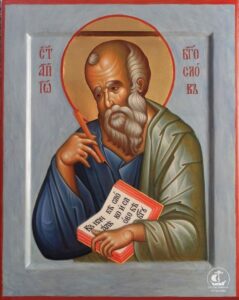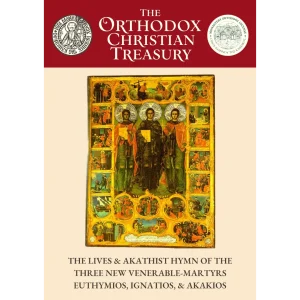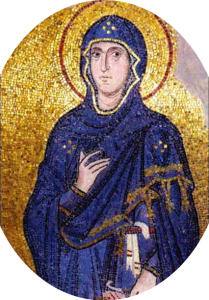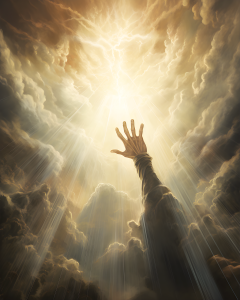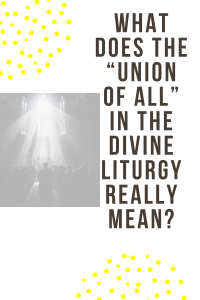St. Edward the Martyr of England – March 18
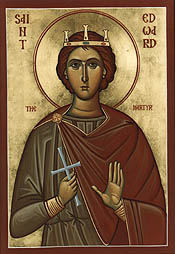
Source: orthodoxwiki
The holy and right-believing King Edward the Martyr (c. 962 – March 18, 978/979) succeeded his father, Edgar of England, as King of England in 975, but was murdered after a reign of only a few years. As the murder was attributed to “irreligious” opponents, whereas Edward himself was considered a good Christian, he was glorified as Saint Edward the Martyr in 1001; he may also be considered a passion-bearer. His feast day is celebrated on March 18, the uncovering of his relics is commemorated on February 13, and the elevation of his relics on June 20. The translation of his relics is commemorated on September 3.
Motive and details of his martyrdom
Edward’s accession to the throne was contested by a party headed by his stepmother, Queen Elfrida, who wished her son, Ethelred the Unready, to become king instead. However, Edward’s claim had more support—including that of St. Dunstan, Archbishop of Canterbury—and was confirmed by the Witan.
King Edward “was a young man of great devotion and excellent conduct. He was completely Orthodox, good, and of holy life. Moreover, he loved God and the Church above all things. He was generous to the poor, a haven to the good, a champion of the Faith of Christ, a vessel full of every virtuous grace.”
On King Edward’s accession to the throne, a great famine was raging through the land and violent attacks were stirred up against monasteries by prominent noblemen who coveted the lands that his father King Edgar had endowed to them. Many of these monasteries were destroyed, and the monks forced to flee. The king, however, stood firm together with Archbishop Dunstan in defense of the Church and the monasteries. For this, some of the nobles decided to remove him and replace him with his younger brother Ethelred.
On March 18, 978, the king was hunting with dogs and horsemen near Wareham in Dorset. During the hunt the king decided to visit his younger brother Ethelred who was being brought up in the house of his mother Elfrida at Corfe Castle, near Wareham. Separating from his retinue, the King arrived alone at the castle. While still on his horse in the lower part of the castle Elfrida offered Edward a glass of mead. While he was drinking it, Edward was stabbed in the back by one of the queen’s party. Ethelred himself was then only ten years old, and so was not implicated in the murder.
History of his relics
The stories of the relics of St. Edward began at the moment of his death (martyrdom). Immediately following the murder, the body of the murdered king slipped from the saddle of his horse and was dragged with one foot in the stirrup until the body fell into a stream at the base of the hill upon which Corfe Castle stands (the stream was found thereafter to have healing properties—particularly for the blind). The queen then ordered that body be hurriedly hidden in a hut nearby. Within the hut, however, lived a woman who was blind from birth, and whom the queen supported out of charity. During the night, a wonderful light appeared and filled the whole hut. Struck with awe, the woman cried out: “Lord, have mercy!” and suddenly received her sight. At this, she discovered the dead body of the king. The church of St. Edward at Corfe Castle now stands on the site of this miracle. At dawn, the queen learned of the miracle and was troubled. Again she ordered the disposal of the body, this time by burying it in a marshy place near Wareham. A year after the murder, however, a pillar of fire was seen over the place where the body was hidden, lighting up the whole area. This was seen by some of the inhabitants of Wareham, who raised the body. Immediately, a clear spring of healing water sprang up in that place. Accompanied by what was now a huge crowd of mourners, the body was taken to the church of the Most Holy Mother of God in Wareham and buried at the east end of the church. This took place on February 13, 980.
On the account of a series of subsequent miracles, the relics were translated to the abbey at Shaftesbury. When the relics were taken up from the grave, they were found to be whole and incorrupt. The translation of the relics occurred in great procession on February 13, 981, and arrived at Shaftesbury seven days later. There the relics were received by the nuns of Shaftesbury Abbey and were buried with full royal honors on the north side of the altar. On the way from Wareham to Shaftesbury, a further miracle had taken place; two crippled men were brought close to the bier, and those carrying it lowered the body to their level, whereupon the cripples were immediately restored to full health. This procession and these events were re-enacted in 1000 years later in 1981. In 1001, the tomb in which the saint lay was observed to regularly rise from the ground. King Ethelred was filled with joy at this and instructed the bishops to raise his brother’s tomb from the ground and place it into a more fitting place. As the tomb was opened a wonderful fragrance issued from it, such that all present “thought that they were standing in Paradise”. The bishops then bore away the sacred relics from the tomb and placed them in a casket in the holy place of the saints together with other holy relics. This elevation of the relics of St. Edward took place on June 20, 1001.
St. Edward was officially glorified by the All-English Council of 1008, presided over by St. Alphege, Archbishop of Canterbury (who was later also martyred by the Danes in 1012). King Ethelred ordered that the saint’s three feast days (March 18, February 13, and June 20) should be celebrated throughout England. Shaftesbury Abbey was rededicated to the Mother of God and St. Edward. Shaftesbury was apparently renamed “Edwardstowe,” only reverting to its original name after the Reformation. Many miracles were recorded at the tomb of St. Edward including the healing of lepers and the blind.
During the sixteenth century, under King Henry VIII of England, monasteries were dissolved and many holy places were demolished, but St. Edward’s remains were hidden so as to avoid desecration. In 1931, the relics were recovered by Mr. Wilson-Claridge during an archaeological excavation; their identity was confirmed by Dr. T.E.A. Stowell, an osteologist. In about 1982, Mr. Wilson-Claridge donated the relics to the Russian Orthodox Church Outside Russia, which placed them in a church in Brookwood Cemetery, in Woking, Surrey. The St. Edward Brotherhood of monks was organized there as well. The church is now named St. Edward the Martyr Orthodox Church.

